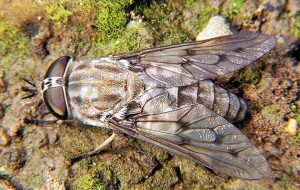SWAMP FEVER:
Equine Infectious Anemia (EIA), otherwise called SWAMP fever is a horse sickness brought about by a retrovirus and transmitted by bloodsucking creepy crawlies.

virus is mechanically transmitted starting with one horse then onto the next by the bloodsucking flies, Tabanus, Stomoxys spp., mosquitoes and conceivably midges.
Symptoms of SWAMP Fever:
Symptoms incorporate intermittent fever, weight reduction, an extended spleen, iron deficiency, and swelling of the lower trunk, abdominal wall, penile sheath, scrotum, and legs. Horse tires effortlessly because of a repetitive fever and anemia, may backslide to acute shape after the first attack.
Pathogenesis of SWAMP FEVER:
The EIA infection is a moderate acting infection of the lenti-retrovirus aggregate. Retroviruses cause leukemia in felines, mice and dairy cattle, joint pain, pneumonia and neurological maladies in small ruminants and (AIDS) in people. Virus restrict and duplicate in macrophages of numerous organs, particularly in the spleen, liver, kidney, and lymph nodes.where they assume control over the cell and sit and hold up to wind up distinctly enacted. Upon actuation, the cell replicates more infections, which blasts free from the cell to contaminate different cells. This causes repeating cycles, in which the horse appears to be normal and after that ill.
Treatment of SWAMP FEVER:
There is no known treatment that can wipe out the infection from the body. To date there are no acceptable vaccines for EIA. The Coggins’ test is an agar gel diffusion (AGID) test, which is a down to earth demonstrative test for recognizing horses tainted with EIA. This test is utilized to recognize the EIA immune response.
